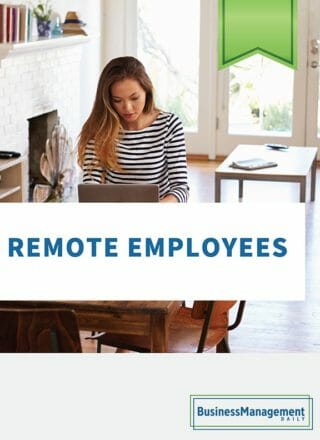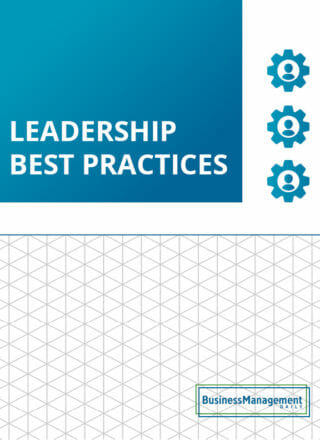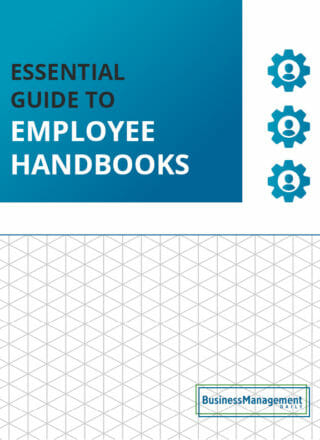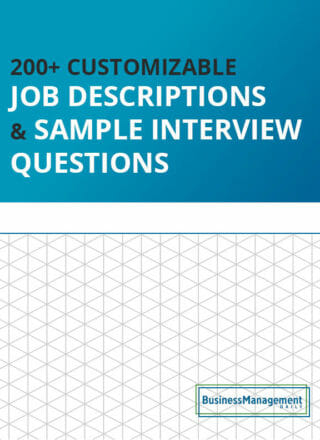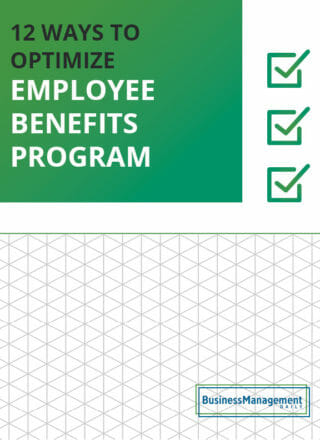Learning experience platforms employee growth
Beyond LMS: Why personalized learning experiences matter
Learning experience platforms are changing how businesses approach employee development. Unlike traditional learning management systems, these platforms focus on personalized, engaging experiences tailored to individual needs. Understanding this shift is essential for HR professionals and business managers. By fostering continuous learning, these platforms help teams grow, improve skills, and stay competitive in today’s fast-moving business world.
What are learning experience platforms (LXP)?
Learning experience platforms, or LXPs, are reshaping how organizations deliver employee training and development. At their core, these platforms prioritize the learner’s needs, focusing on personalized, intuitive, and engaging experiences.
Unlike traditional systems that often feel rigid and one-size-fits-all, LXPs adapt to individual preferences, ensuring employees remain motivated and connected throughout their learning journey.
An LXP isn’t just another tool; it’s a central hub that brings together various learning resources, from videos and articles to podcasts and community discussions. Through these platforms, employees can access curated content, track their progress, and even discover new learning paths tailored to their goals.
Most importantly, LXPs emphasize continuous learning, making them a powerful solution for organizations that want to foster growth in an ever-changing business environment.
Key features of learning experience platforms
What sets LXPs apart are the thoughtful, learner-centric features baked into their design. These features exist to make learning quicker, more accessible, and more engaging for today’s busy professionals. Let’s break down the key highlights:
- Personalized learning pathways: Everyone learns differently, and LXPs are built with this understanding. These platforms create tailored learning paths based on an employee’s role, career objectives, and past interactions. Think of it as a digital coach guiding users toward relevant content that boosts their skills.
- AI-driven suggestions: LXPs use artificial intelligence to recommend courses, articles, and other resources that align with individual needs. It’s like how streaming platforms suggest your next binge-worthy show, but instead, you’re discovering valuable learning content that helps you perform better at work.
- Multi-format content options: Some people learn best by watching videos, while others may prefer reading an article or listening to a podcast. LXPs cater to this with diverse content formats, ensuring employees can choose what works best for them.
- Social learning tools: Learning doesn’t have to be a solo activity. Many LXPs enable collaboration through community forums, discussion boards, and even peer-to-peer content sharing. This fosters a culture of shared knowledge and teamwork across the organization.
- Microlearning opportunities: LXPs often include bite-sized lessons for employees with packed schedules that can be completed in just a few minutes. This makes it easier for learners to squeeze in valuable knowledge without disrupting their workday.
- Skill tracking and progress monitoring: LXPs often include dashboards that showcase employees’ accomplishments and skills they’re building. Visualizing progress motivates learners to continue their development.
These features work together to create a dynamic platform where learning feels purposeful, convenient, and impactful.
How LXPs differ from LMS
While both learning experience platforms and learning management systems (LMS) serve as tools for employee training, their approaches are vastly different. If you’ve ever used an LMS, you know they often feel transactional—get in, finish a course, get out. LXPs take things to the next level by focusing on engagement and user experience.
Here’s how the two compare:
- Design philosophy:
- LMS platforms are structured, focusing on top-down management. Administrators assign courses, and learners follow a predefined path. This highly controlled environment is designed for compliance or mandatory training.
- LXPs, by contrast, are designed with the learner in mind. The experience is less about checking boxes and more about exploration, curiosity, and growing skills in a way that feels natural.
- LMS platforms are structured, focusing on top-down management. Administrators assign courses, and learners follow a predefined path. This highly controlled environment is designed for compliance or mandatory training.
- Content accessibility:
- While an LMS typically offers corporate-owned learning content, LXPs bring flexibility by integrating external resources. Employees can access third-party courses, industry articles, YouTube videos, and even TED Talks, all in one place.
- While an LMS typically offers corporate-owned learning content, LXPs bring flexibility by integrating external resources. Employees can access third-party courses, industry articles, YouTube videos, and even TED Talks, all in one place.
- Engagement and motivation:
- LMS platforms often lack personalized elements, and their rigidity can be off-putting. Most users interact with an LMS only when they have to.
- LXPs prioritize user engagement with AI recommendations, gamification, and social learning features. Employees want to log in, not just because they’re required to, but because they see value in it.
- LMS platforms often lack personalized elements, and their rigidity can be off-putting. Most users interact with an LMS only when they have to.
- Outcome focus:
- The goal of an LMS is to complete training and ensure employees meet specific compliance metrics.
- LXPs emphasize learning outcomes, career growth, and building relevant skills. This shift better aligns with the needs of businesses wanting to develop well-rounded, future-ready talent.
- The goal of an LMS is to complete training and ensure employees meet specific compliance metrics.
- Customization and flexibility:
- With traditional LMS platforms, there’s limited room for customization. It’s a highly standardized system.
- LXPs are adaptable, allowing users to shape their training experiences and even contribute content when appropriate.
- With traditional LMS platforms, there’s limited room for customization. It’s a highly standardized system.
In summary, LMS platforms cater to administrative needs, whereas LXPs revolve around the learner. This difference is why LXPs are becoming increasingly popular among businesses striving for a more innovative and inclusive way to support employee development.
Why businesses need learning experience platforms
Businesses today face constant challenges in building and retaining skilled workforces. Employees want growth opportunities, but traditional training tools often fail to deliver. Learning experience platforms (LXPs) address this gap by creating a personalized, engaging approach to learning that benefits both employees and employers. Here’s why LXPs are becoming essential for organizations.
Improving employee training and development
Training is no longer just about delivering information—it’s about empowering employees to take control of their own growth. Learning experience platforms enhance educational materials by making them more engaging, accessible, and relevant to individual goals.
Instead of forcing everyone through the same rigid system, LXPs let people choose their own learning path. Imagine giving employees a roadmap with destinations they’re excited to visit instead of a generic, one-size-fits-all guide.
LXPs organize content into interactive modules, personalized recommendations, and on-demand learning opportunities. For example, an employee aiming to improve leadership skills might discover a curated mix of podcasts, video lessons, and articles tailored to enhance their knowledge while fitting their schedule.
This isn’t just convenient—it’s empowering. It allows employees to learn in the format that suits them best, whether they’re visual learners, prefer hands-on examples, or like to reflect through reading.
The ability to update training on the fly makes this approach even more effective. LXPs connect learners with the latest resources, ensuring content stays fresh and aligns with industry trends. Plus, a focus on continuous learning helps employees build new skills over time instead of feeling stuck with outdated knowledge.
Let’s not forget the benefits for the HR team. Instead of spending hours coordinating generic training sessions, they can use an LXP to upload relevant materials, track progress, and identify skill gaps across teams.
It’s a win-win: employees feel encouraged to grow, and leaders can focus on supporting talent development across the entire company.
Boosting retention through engagement
Employee retention is one of the toughest issues businesses face. Skilled professionals expect more than a paycheck—they want an environment where their careers can flourish. This is where an LXP becomes invaluable. By providing personalized and interactive learning experiences, organizations can cultivate satisfaction and a sense of belonging.
One way LXPs improve engagement is through gamification. Learning becomes more rewarding when achievements are celebrated through badges, points, or leaderboards. These features make professional development feel engaging rather than like a chore. Think of it as turning training into a motivational challenge instead of a mandatory task.
Personalization also plays a major role. With powerful AI tools, LXPs recommend content uniquely suited to each employee’s role, goals, and learning style. This could mean guiding a new hire through foundational skills while delivering advanced material to experienced team members who need leadership training. By crafting these tailored experiences, you’re showing employees that you value their growth, not just their output.
Interactive options such as discussion boards and user-generated content also encourage collaboration. Employees learn from their peers, widening their perspectives and deepening engagement. When people feel connected to their colleagues and invested in the learning process, they’re far less likely to search for new opportunities elsewhere.
In fact, organizations that prioritize employee development are typically seen as more attractive employers. Employees want to stay in environments that invest in their future, and the flexibility of LXPs makes this commitment clear.
The result? Higher retention rates, fewer hiring costs, and a team that continually builds its capabilities over time.
How to choose the right learning experience platform
Selecting the right learning experience platform (LXP) for your business is more than just picking a tool—it’s about finding a solution that aligns with your objectives, team needs, and long-term goals. With so many options on the market, the decision can feel overwhelming. Breaking this process down into manageable factors can make identifying the best fit for your organization easier.
Evaluating key features and capabilities
When choosing a learning experience platform, it’s critical to prioritize functionality. The right features directly impact how well the platform serves your team. Some capabilities are non-negotiable for organizations looking to maximize learning outcomes. Here’s what to look for:
- Analytics and reporting: A strong LXP offers robust analytics to measure learning progress. Data insights on course completion rates, skill acquisition, and employee engagement are essential. Analytics ensure you can track the ROI of your training initiatives and adapt content when necessary.
- Seamless integration: Does the platform work with tools you already rely on? Integration is key, whether it’s your HR system or other workplace technologies like Slack, Microsoft Teams, or existing LMS systems. Platforms that play well with your current setup reduce headaches and provide a smoother experience for administrators and learners alike.
- Personalized learning recommendations: Not every learner has the same goals. Platforms with AI-driven recommendations can deliver tailored content to each employee based on their role, skill level, and career aspirations. It’s like having a personal tutor for everyone on your team, ensuring they get exactly what they need to grow.
- Ease of use: A clunky or confusing platform will discourage participation. The best LXPs are designed with user-friendly navigation, mobile compatibility, and intuitive interfaces. Employees shouldn’t have to fight with the tech to gain knowledge. If it’s easy to use, they’ll naturally engage more.
As you research options, think about the day-to-day experience for everyone involved. Will employees find it engaging? Are managers equipped with the tools they need to monitor progress? The answers to these questions will steer you in the right direction.
Considering scalability and future needs
It is tempting to choose a platform that meets only your current requirements, but this short-term thinking can lead to headaches later. Your business is likely to grow, and your learning needs will evolve with it. To avoid outgrowing your LXP, consider scalability from the start.
- Growth potential: Imagine your company doubles in size. Will the platform still be effective? Look for an LXP that can scale with your workforce, accommodating more users, diverse roles, and expanded content libraries over time. If it fits your business today but lacks flexibility, it’s not the right choice.
- Customizable learning paths: As industries change, so do skill requirements. Choose an LXP that allows you to update content and offerings continuously. Platforms with customizable features make it easy to adjust training programs to match new goals or market demands.
- Vendor support: Future-proofing also means ensuring you have reliable support. Will the vendor assist you in scaling up when needed? Look for providers that stay committed after the sale, offering software updates, technical help, and training on new features as they’re released. A strong partnership can make all the difference.
- Cost efficiency: Some platforms charge based on active users, while others offer flat fees. If you anticipate growth, think about how pricing structures will affect your budget in the long run. Today’s most affordable option might become a financial burden as your team expands.
Selecting an LXP with scalability in mind is like buying a home with a growing family in mind. If you know you’ll need more space down the road, it makes sense to plan for it now instead of scrambling later. Scalability ensures the platform remains an asset, not a limitation, as your business thrives.
The right learning experience platform will balance current functionality and future adaptability. By focusing on features like analytics, integration, personalization, and scalability, you’ll make an informed decision that positions your team—and your business—for long-term success.
Future trends in learning experience platforms
As organizations prioritize employee development, learning experience platforms (LXPs) are rapidly evolving to meet new demands. These platforms are no longer just repositories for training resources—they’re intelligent systems reshaping how people learn and grow at work. The integration of advanced technologies is paving the way for more personalized, engaging, and effective learning experiences. Let’s explore two transformative areas shaping the future of LXPs.
The role of AI and machine learning in LXPs
Artificial intelligence (AI) and machine learning (ML) are redefining how LXPs operate, making them smarter and more user-focused than ever before. A traditional training system might assume a one-size-fits-all approach, but today’s LXPs rely on AI to adapt to each user’s needs in real time.
Here’s how AI is changing the game:
- Personalized recommendations: Think about how streaming services like Netflix or Spotify tailor suggestions based on your preferences. LXPs are adopting a similar model by using AI-powered algorithms to curate learning paths. If an employee consistently excels in leadership courses, the platform might suggest communication or conflict resolution resources—skills that align with leadership growth.
- Content curation at scale: AI organizes vast amounts of content into bite-sized, meaningful recommendations. It scans libraries of courses, videos, and articles, then identifies what’s most relevant to the learner. This saves employees from sifting through endless options and ensures they spend time on materials that matter.
- Predictive learning: Machine learning uses past behavior to predict future needs. For instance, if an employee is preparing for a management role, the platform might proactively introduce them to team-building or strategic decision-making resources. These predictive features help streamline the learning journey and keep employees one step ahead in their development.
- Adaptive learning: Not everyone learns the same way, and that’s where adaptive learning comes in. LXPs equipped with AI can detect patterns in how employees interact with material. The platform might provide simpler explanations or additional content if someone struggles with a specific topic. Meanwhile, high-performing users might receive more challenging material to keep them engaged.
AI and ML are transforming LXPs into intuitive systems that support the learner every step of the way. The technology doesn’t just assist; it anticipates, adapts, and accelerates learning in ways we couldn’t have imagined a few years ago.
Impact of emerging technologies on learning
Emerging technologies like virtual reality (VR) and gamification are reshaping how employees engage with training content. These tools bring learning experiences to life by immersing users in interactive and practical scenarios, bridging the gap between theory and real-world application.
Virtual reality (VR) in training
VR takes experiential learning to the next level. Placing employees in simulated environments allows them to practice skills in a risk-free setting that mimics real-world conditions.
For example:
- Safety training: Instead of reading guidelines in a manual, employees can use VR to navigate high-risk scenarios like handling hazardous materials or managing equipment failures. Practicing these situations virtually ensures they’re prepared for challenges in the workplace without the actual dangers.
- Soft skills development: Communication and leadership are often tricky to teach in a traditional format. With VR, employees can take part in virtual role-playing exercises. They might practice having tough conversations with team members or presenting to a virtual audience, receiving instant feedback to improve their delivery.
- Onboarding and orientation: New hires can explore virtual versions of their workplace before stepping into the office. This approach speeds up onboarding and makes the process more engaging.
Gamification and engagement
Gamification is all about turning training into an interactive and rewarding experience. Rather than treating learning as a chore, LXPs motivate employees by using elements like points, badges, and rewards.
Here’s why gamification works:
- Encouraging progress: Leaderboards and achievement badges tap into our natural desire to compete and excel. Employees are more likely to complete courses when they see their progress than their peers or earn recognition for their efforts.
- Making learning accessible: Breaking down training into mini-games or challenges keeps employees engaged. For instance, they might complete a short quiz to “unlock” the next module, transforming learning into a fun, step-by-step process.
- Promoting long-term retention: Studies show we remember information better when it’s tied to an active experience. Gamification strategies, like interactive simulations or trivia-style quizzes, make training memorable and impactful.
The bigger picture: Combining technologies
The most forward-thinking LXPs don’t rely on just one of these technologies—they combine them. Imagine an employee donning a VR headset to practice conflict resolution while earning points for completing different scenarios. Or a platform using AI to recommend gamified modules based on prior learning progress. The possibilities are limitless when these innovations work together.
As these emerging tools become more refined and accessible, they will play an even greater role in creating immersive, engaging, and effective learning experiences. Businesses that embrace these advancements now will position themselves as leaders in employee development.
Conclusion
Learning experience platforms are redefining how businesses invest in their teams. By prioritizing personalization, engagement, and accessibility, they offer a modern solution to the evolving demands of employee development. These platforms support continuous learning and strengthen talent retention, helping organizations stay competitive in an ever-changing environment.
If your business aims to create a culture of growth and adaptability, exploring an LXP could be the next step. Assess your team’s needs, consider the potential for long-term impact, and take action. The right platform can transform training from a task into an opportunity, empowering both your workforce and your organization to thrive.

